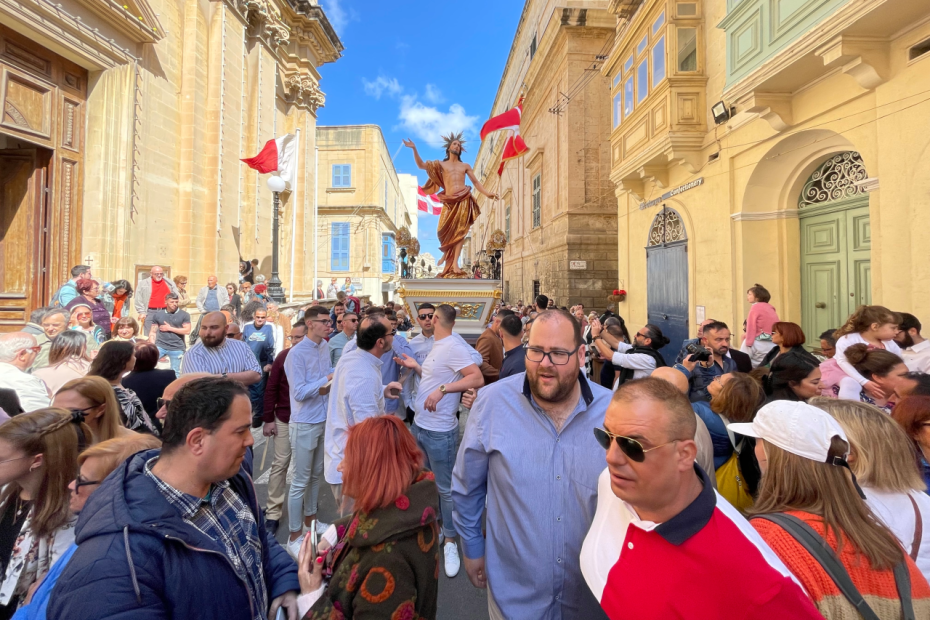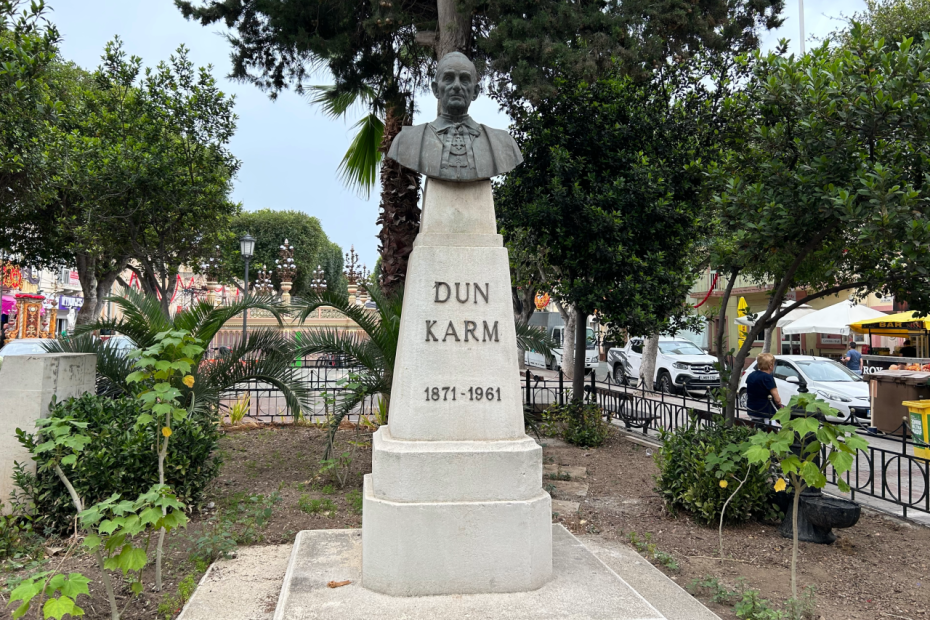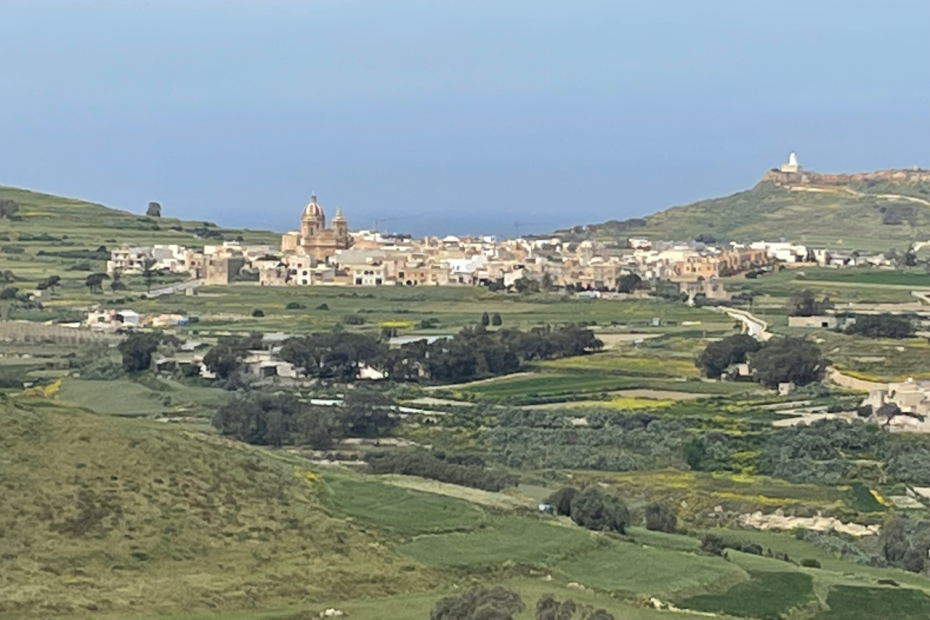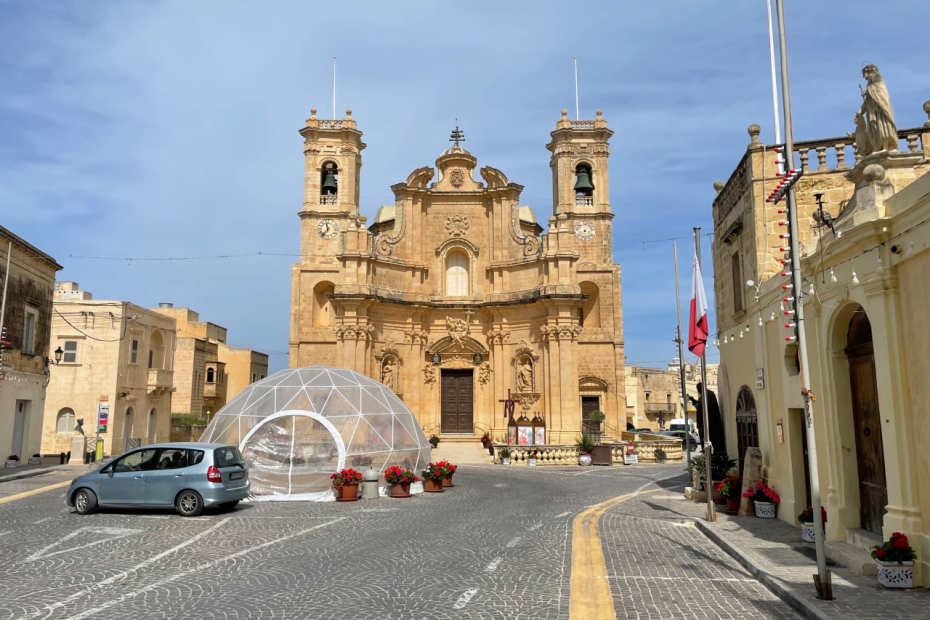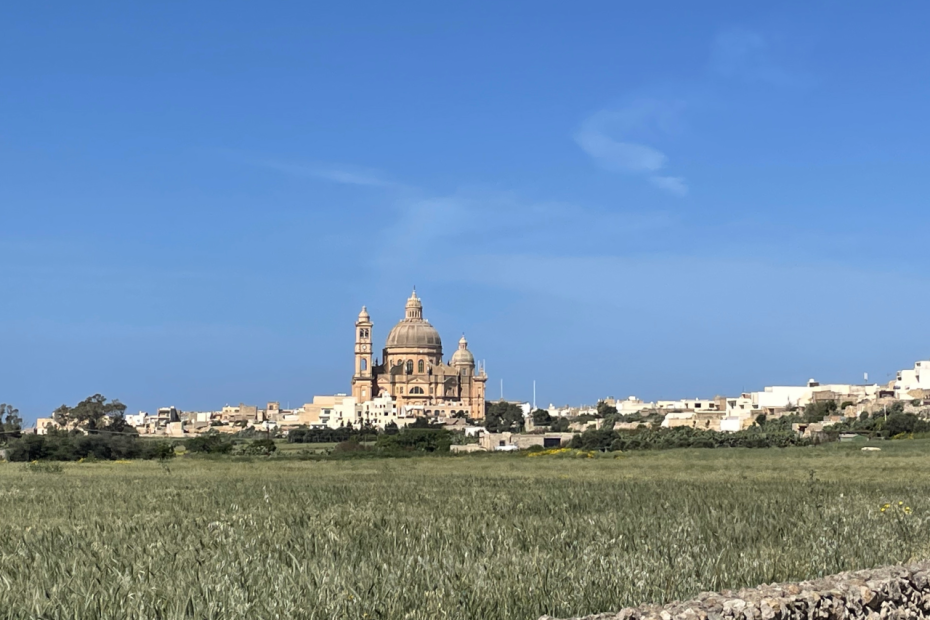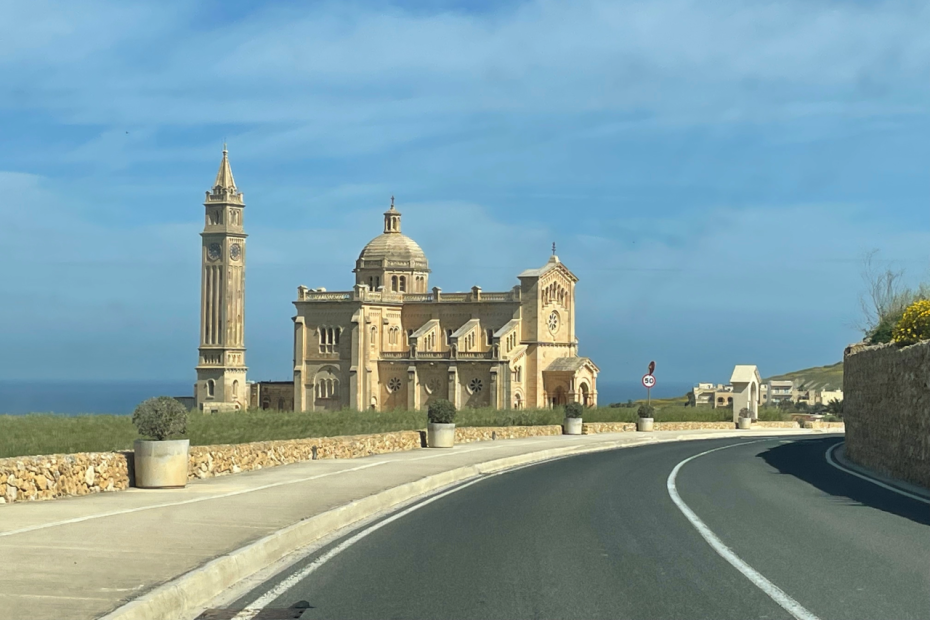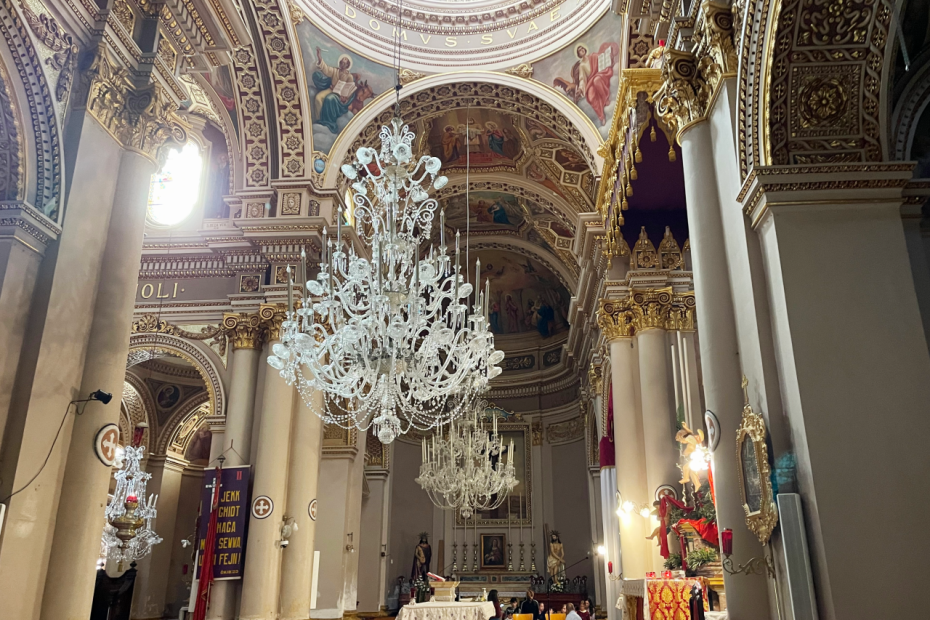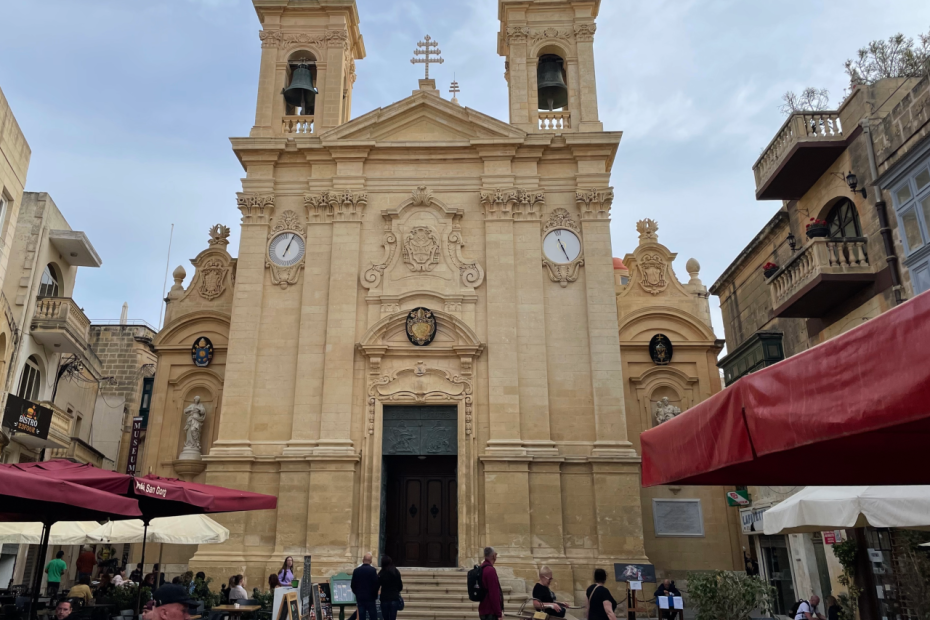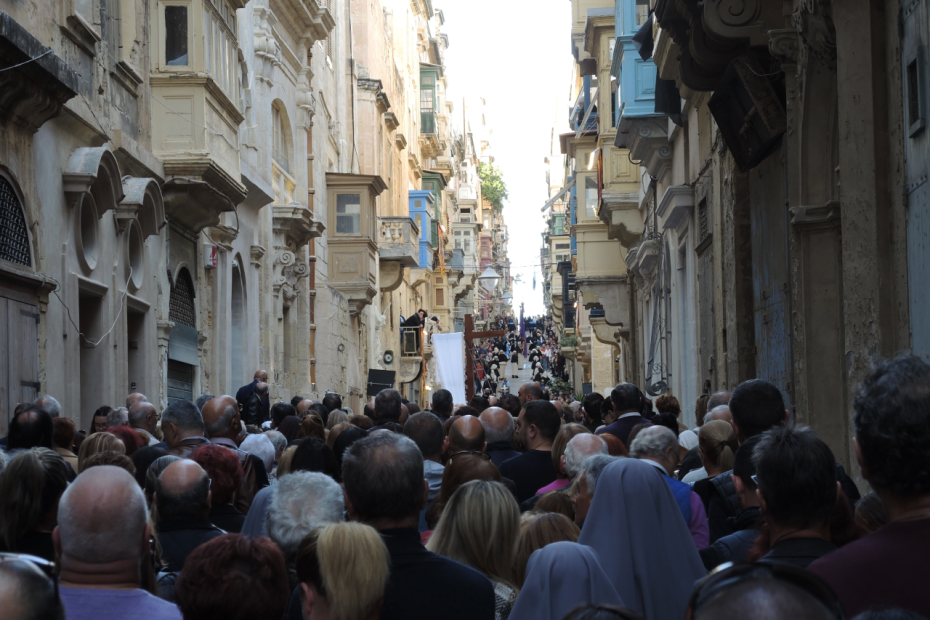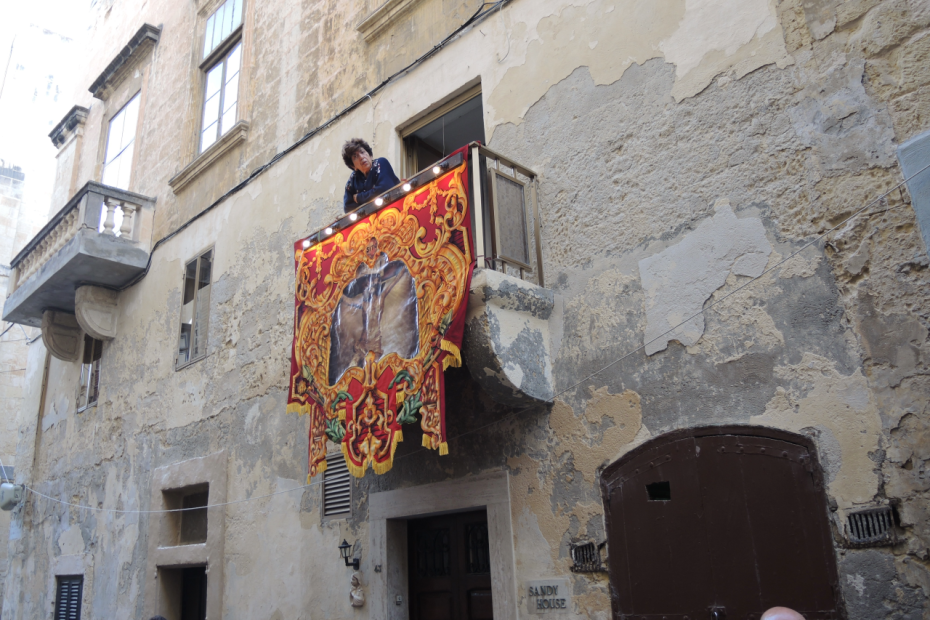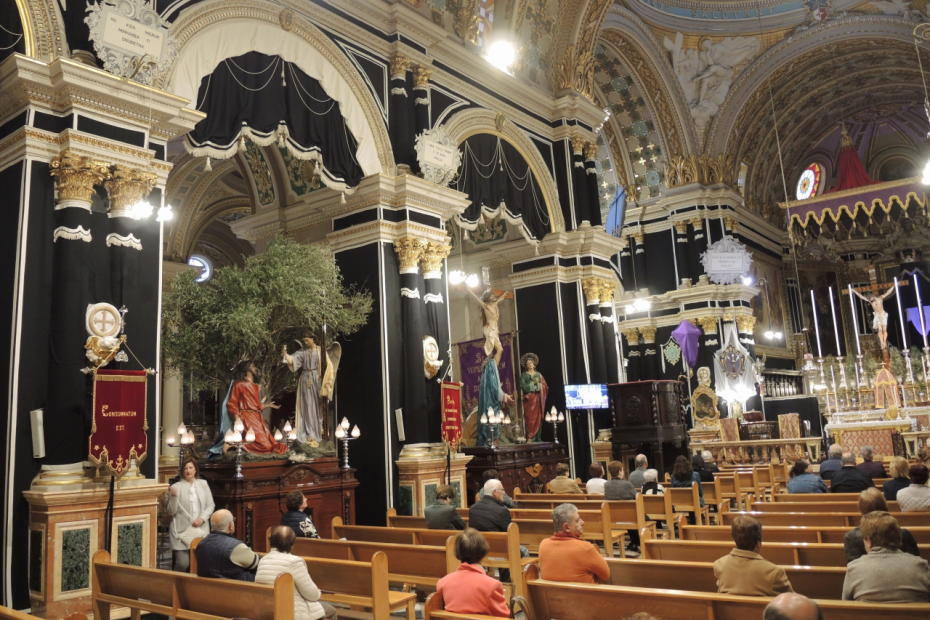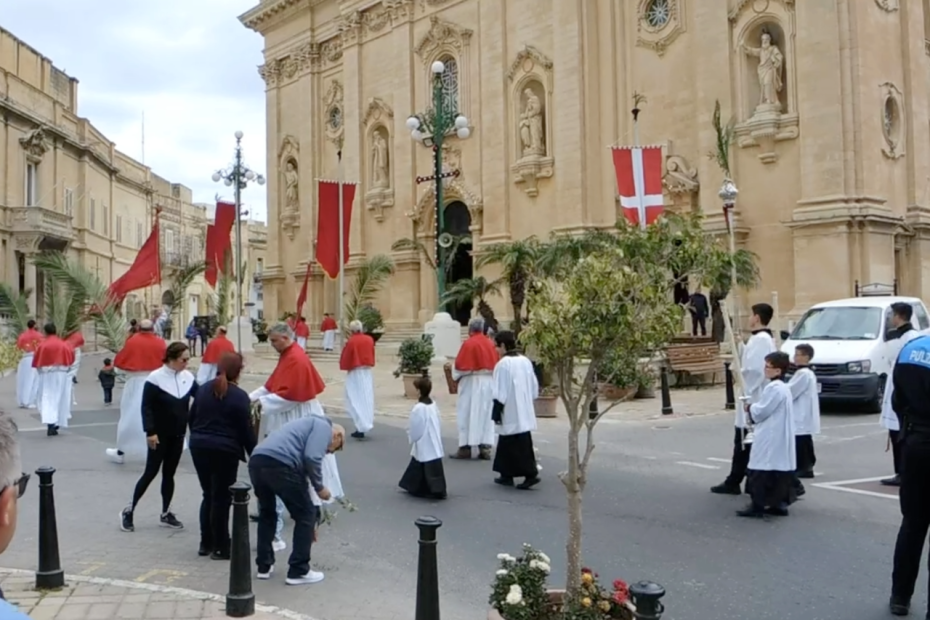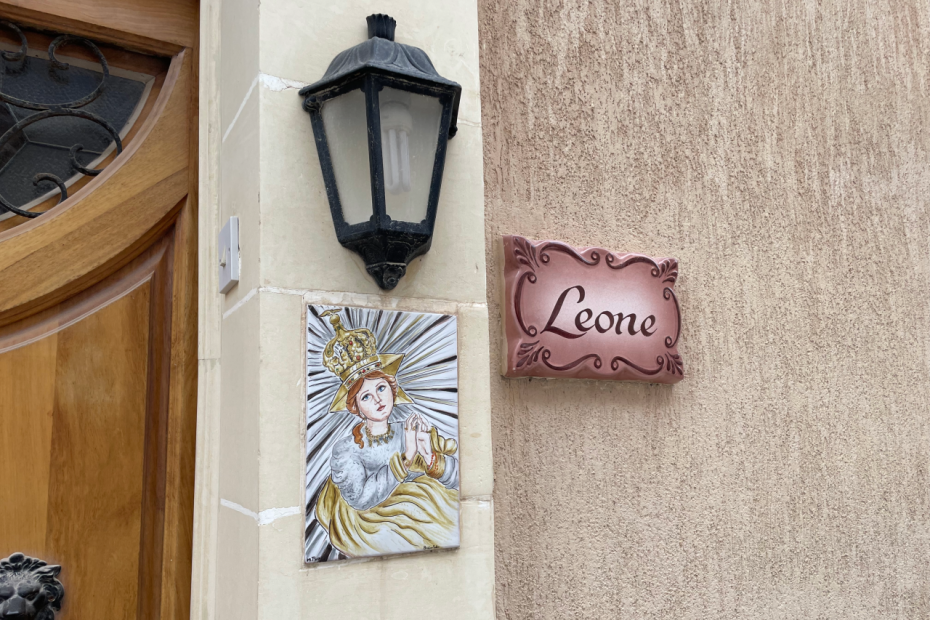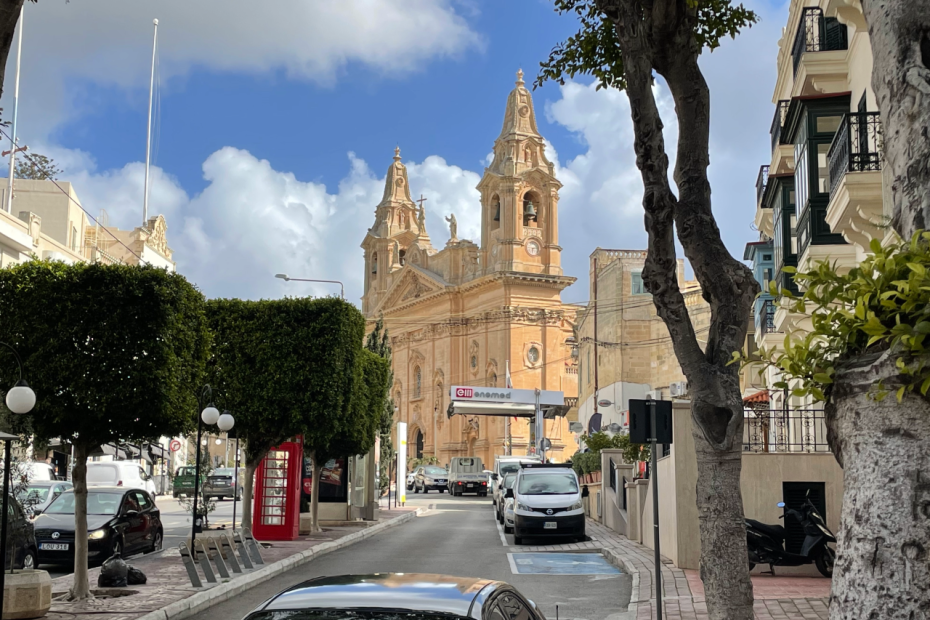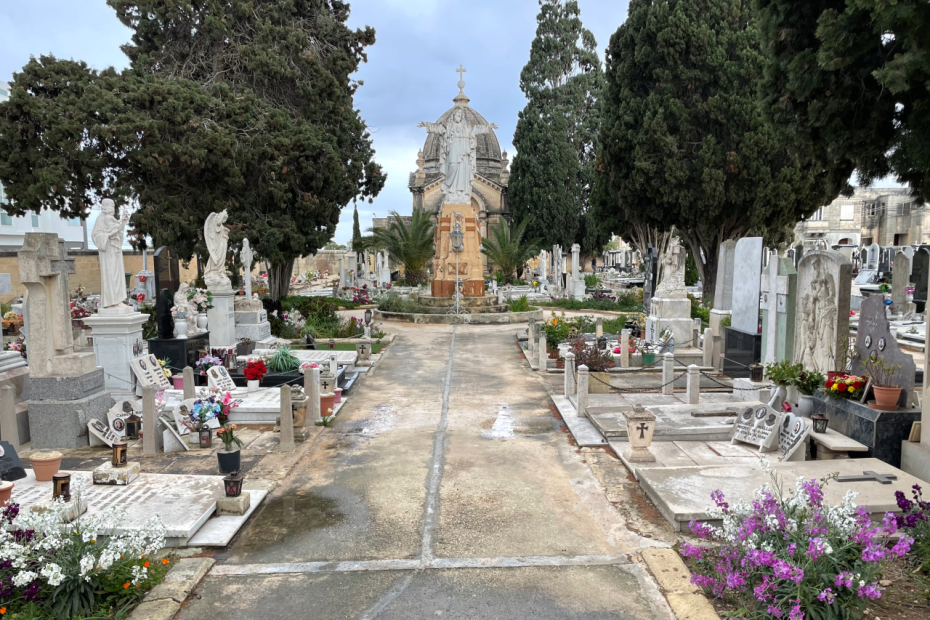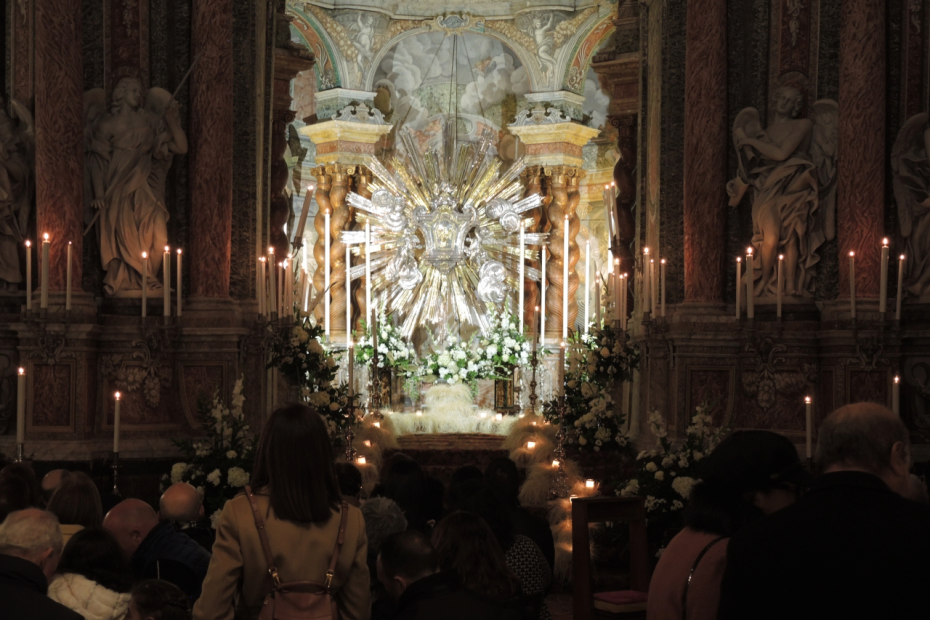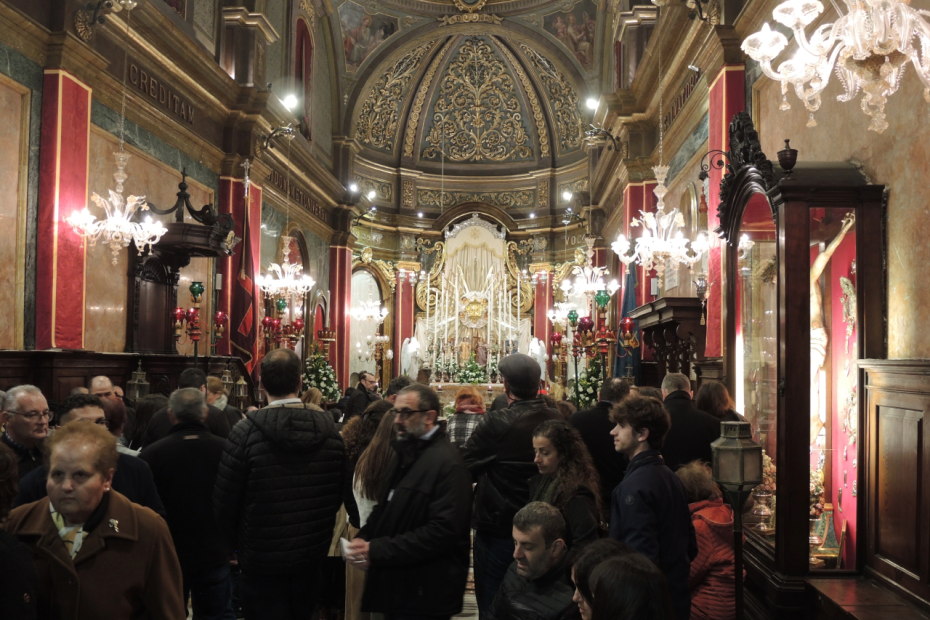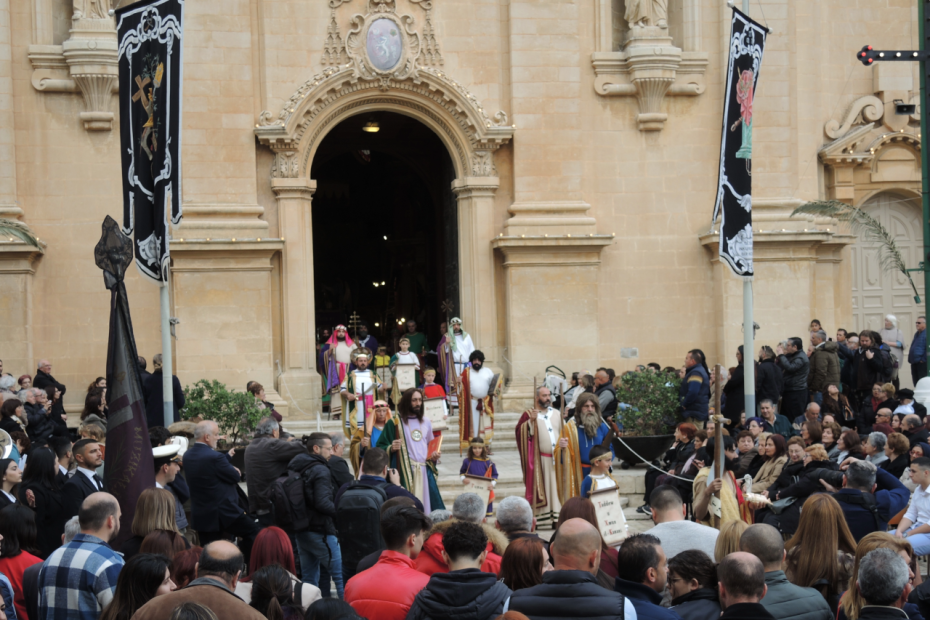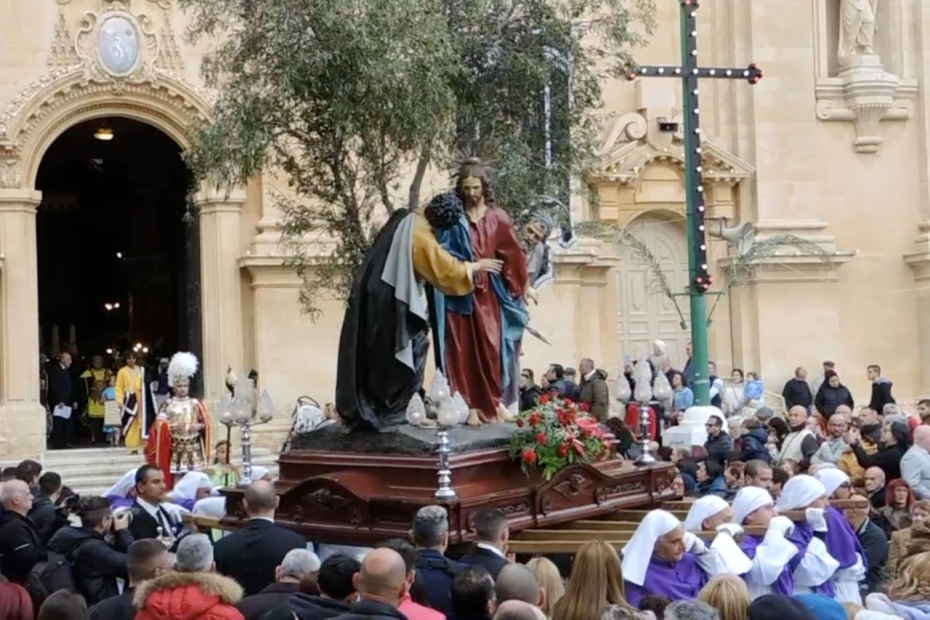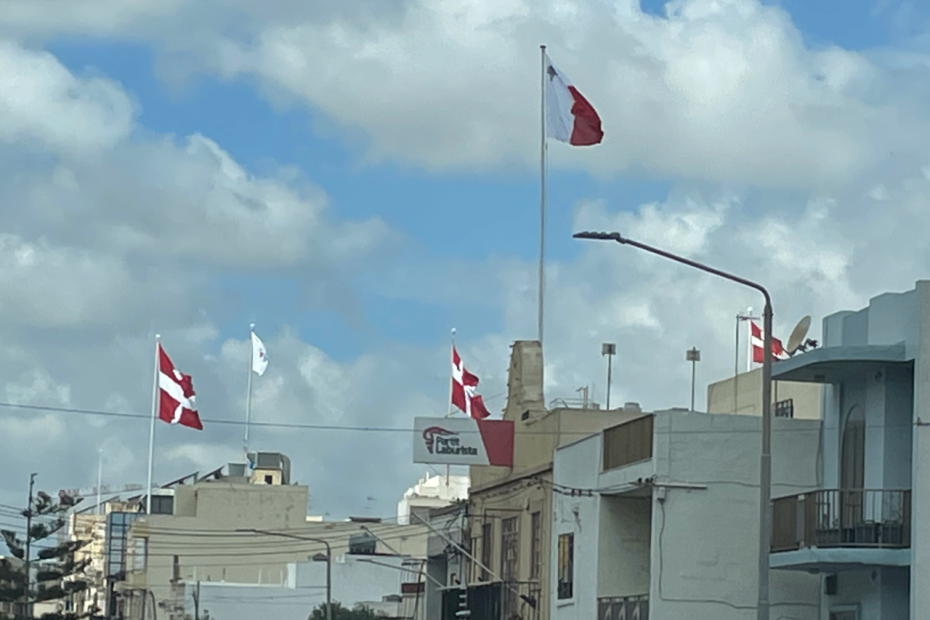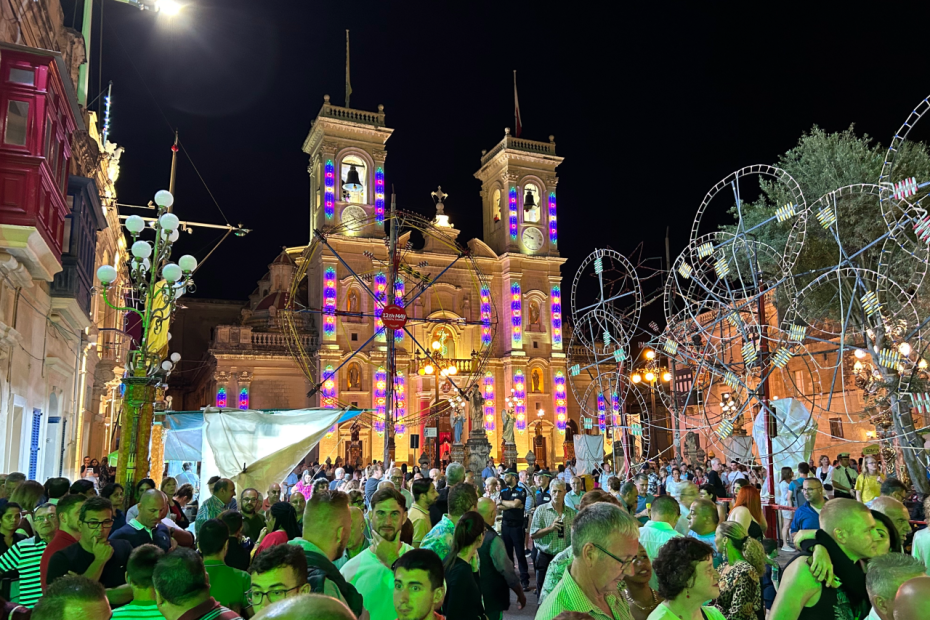Malta, an island nation in the Mediterranean almost 200 km south of Sicily, is actually comprised of a group of islands quite close to each other, two of which are inhabited: Malta, home to about 480,000 people in 2021, and Gozo, home to about 39,000 people in 2021.1 Though part of the European Union, it lies further south in the Mediterranean than the North African cities of Tunis and Algiers. The country’s primary language, Maltese, is a Semitic language derived from Arabic but written in Latin script.2
Historically intensely Catholic, the islands are thick with Catholic institutions and symbols, including an astounding number of large and elaborate churches. The islands’ more than 350 churches and chapels, almost all in elegant baroque or neoclassical style, are especially remarkable achievements considering the size of the rural villages where most were built.
Maltese Catholicism still stands out in the world in terms of how visible, material, performative, and public it is, even though Catholicism’s once all-embracing hold on the islands has waned and its forms of practice are more varied today. Annual parish feasts and Holy Week commemorations are celebrated with elaborate decorations, statues, and processions that build upon centuries-old traditions of baroque spectacle. The booming sounds of brass and woodwinds from the village bands, or bells and fireworks from on high also enthusiastically summon people’s attention to these events. This tradition of spectacle doesn’t exhaust or fully capture the variety of Catholic life and practice in Malta, but it certainly colors life on the islands.
Catholicism remains integral to Maltese culture, enshrined in the constitution as the country’s official religion, but the once-homogenous country has recently grown more religiously diverse. In a 2023 government census, 82.6% of Maltese identified as Roman Catholic.3 According to a 2018 Church census, nearly 40% of Maltese attended Mass weekly (74% once a month), which by that measure still makes it one of the most Catholic countries in Europe.4
Historical Background
Maltese Catholics trace their Christian history, at least symbolically, to St. Paul, who according to Acts of the Apostles was shipwrecked in Malta when being transported to Rome as a prisoner.5 The oldest evidence of actual Christian communities dates after the fall of Rome when the islands were controlled by the Byzantine Empire, so the Christianity practiced at that time was certainly Byzantine as well. The islands fell to North African Muslim rule in 870 and remained under their control until Norman invaders from Europe retook them in 1127. It is unclear whether Christianity continued during those 200 years of Muslim rule or even if the Maltese islands were much inhabited. During the Norman period, Latin forms of worship and religious practice were brought to Malta from Sicily, as were the Maltese and Italian languages.6 Muslims were eventually expelled from the islands. For centuries, as one scholar describes it, Malta’s culture drew from several directions on the compass. Malta’s powerholders were oriented toward Europe. Folk culture was oriented toward North Africa.7
Sicily’s ruler, Emperor Charles V, handed control of the islands in 1530 to the Knights Hospitaller of St. John. The Knights, an order of celibate nobles from throughout Europe whose mission combined military prowess and charitable works like hospitals, transformed the islands and the cultural and aesthetic pattern of Maltese Catholic life thereafter.8 In the wake of a massive, almost-successful Ottoman Turkish siege in 1565 that still holds an important place in the Maltese imagination, the Knights built up huge fortifications around several main cities and brought the elegant and elaborate baroque style to urban and village churches alike. The islands’ identity was continuously reinforced as a military and religious stronghold against incursions from the Muslim world. Rule by a noble religious order ensured that Malta was a theocratic state, though the Maltese themselves were never allowed membership in the ruling order of Knights.
The Knights’ rule ended when Napoleon seized the islands at the end of the 18th century. Malta appealed to British forces to expel the French, and the British stayed, using the islands for 164 years as a strategic naval base. To a surprising degree, Protestant Britain protected the Catholic Church’s status and prerogatives in Malta to such a degree that after those 164 years, Jeremy Boissevain could still report, “Religion permeates the structure of Maltese society to an extent that makes it quite impossible to classify many institutions as religious or secular.”9 Priests and nuns continued to provide almost all of the islands’ educational, health, and charitable services, funded by voluntary giving.10 It was the parish priest–there were no mayors or councilors–who provided local leadership and even validated births for passports.11 A faction of Maltese society favored closer identification with Italy during the era of British rule, but the Italian-German Axis bombings of the islands that caused massive destruction in World War II undermined that sentiment and sealed the use of English as the second national language.12 The postwar years were difficult economically, and a significant number of Maltese migrated away for work, particularly to Australia and Canada.
Malta achieved independence in 1964. At that time, Anthropologist Jeremy Boissevain claimed, “most Maltese, and certainly all Farrugin [the people of a village he studied] are Roman Catholics, most of whom practice their faith devoutly… Virtually everyone goes to one of the five Masses offered on Sundays.” Malta, he said, was thick with devotions, sacramental participation, and regular fasting. The timing of the church bells for the Angelus had a universally understood and respected meaning. When the bell was rung, “work and conversation stop whether in a government office or a village café. People often kneel in the streets when the bells announce the elevation of the Host during a sung Mass.”13 As another scholar put it, the Catholic Church in Malta was “the unique superintending and legitimizing agency of Maltese life.”14
Around the time of independence, the Church entered into a bitter and debilitating confrontation with one of the island’s political parties, eventually resolved but with lasting implications.15 Over time and under both political parties, the state worked to reshape a new nationalist identity whose foundation was not so dependent on the Church. It took control of health care, much of education and social welfare, and eventually the extended landed property holdings that the Church had accrued.16
To provide a new economic foundation, Malta also developed its tourist sector, attracting planeloads of visitors who brought new values and expectations that helped transform the social ecology of the islands.
Surveys reported that in 1995, 61.75% of people said that they attended Mass weekly. A decade later, purported attendance had declined to 51% in a changing social context in a newly prosperous country.17 In 2004, Malta became a member of the European Union, joining a political grouping composed of much more secularized countries. Increasingly, neoliberal attitudes and policies found a place in Maltese life. Malta became so prosperous that from 2010 onward, it brought in huge numbers of guest workers. In a decade, a country that was already among the most densely populated countries in the world grew in population size by 25%. Together, secularization, immigration, and globalization began to complicate Maltese traditional cultural self-conceptions that had been shaped over centuries.
Contemporary Catholic Malta: A Country of Paradoxes & Tensions
In 2023, the Catholic Church is still extraordinarily successful by many measures and is more influential than any other institution. Article 2 of the Constitution of 1974, still in force, reads: “The religion of Malta is the Roman Catholic Apostolic Religion. The authorities of the Roman Catholic Apostolic Church have the duty and the right to teach which principles are right and which are wrong. Religious teaching of the Roman Catholic Apostolic Faith shall be provided in all State schools as part of compulsory education.”18 Eight of Malta’s national public holidays are Catholic feasts: Feast of St. Paul’s shipwreck, February 10; Feast of St. Joseph, March 19; Good Friday; Feast of St. Peter and St. Paul, June 29; Feast of the Assumption, August 15; Feast of Our Lady of Victories, September 8; Feast of the Immaculate Conception, December 8; and Christmas Day.19 In every village, there is seemingly no more important or spectacular occasion than the village saint’s feast which villagers spend much of the year planning. In many cases, there is also a second, competing saint’s feast.
At the same time, legal changes backed by popular support have introduced many changes that the bishops lobbied to prevent: legalization of divorce (2011), assisted reproduction, (2012, 2018), same-sex marriage (2017), prostitution (2017), and medicinal cannabis (2018). Though bishops spoke out on these issues, there have not been sharp culture wars in Malta like there have been in the United States, perhaps because political parties did not fan them.
Today, Edward Warrington points out, that cooperation and conflict between the state and Church ebbs and flows in the fields of “education, rehabilitation of drug addicts, assistance to migrants and refugees, domestic violence, care of the elderly and children and heritage protection.”20 The pattern he sees is characterized by “tensions and ambiguities, opportunities and constraints, competition and cooperation that defies tidy judgements or prognoses about Maltese Catholicism.”21
The state and its citizens seem attuned to Catholic social thought in terms of the priority of human services, which are generous, and the distribution of resources. A 2022 Eurobarometer survey reports, for example, that 87% of Maltese believe that “government should take measures to reduce differences in income levels.”22 Roughly two-thirds of respondents wanted to see more government spending on hospitals, long-term care, pensions, family support policies, and support for low-income people.23 As the chronology of legal changes above suggests, though, the Maltese people have taken a more libertarian perspective when it comes to other matters. Abortion, however, remains illegal, except to save the life of the mother.
One paradox of Maltese Catholicism is the degree to which competition, rising at particular times to a level of conflict that Maltese Catholics recognize is ill-fitting for Christians, is endemic.24 Maltese Catholicism is colored by a particular concern for hierarchy, honor, and prestige that ends up injecting competition into religious life. The splendor of Malta’s churches, some interviewees admitted, derives in part from the desire not to be outdone. Parishes have worked to achieve designation as basilicas and use the red and gold umbrellas that symbolize that status to show it off. The order of processions involving lay confraternities is fixed by precedence, and families see it as their privilege to carry certain statues during Holy Week. Several interviewees volunteered that their parish had seniority over others that were once part of its territory.
Competition is even more overt between parish band clubs and at parish feasts. As our articles on those topics spell out in greater depth, many villages have two clubs, each of which coordinates a different feast, attentively competing so as not to be outdone by the other. The order of the clubs’ foundations matters, and many details about the use and number of symbols to celebrate each saint’s feast are policed by villagers. Priests need to carefully figure out how not to violate various balance of power codes, or they will suffer consequences. For laypeople in a village, loyalty to one club and patron saint over another is often expected and can divide neighbors and families at feast-time. Interviewees told many stories about disrespect even being shown during a feast to the competing band’s saint. In one village, it was partisans of the Virgin Mary and St. Joseph who were at odds.
In Rabat, Gozo, interviewees also reported a comparable spirit of competition between the lay members of the city’s two churches, St. George’s Basilica and Cathedral of the Assumption. Rabat’s residents are expected to decide which parish they belong to, a decision that is treated as a matter of taking sides.
This conflict is nothing new, and it is not limited to religion.25 Asked why the rivalry he recounted is such a part of Maltese life, one committed lay Catholic grinned and said, “It’s more fun that way, isn’t it? You’ve got to do better than the other half.”
The Paradoxes of Secularization
If there is any matter that Maltese are not in disagreement about, it is that Malta has been secularizing, though even that defies easy characterization. Every interviewee for this research was aware of how Catholic a place Malta is and equally conscious of how much, by several measures, religious practice has diminished.
Malta’s secularization, in one classic sense of the term, began decades ago, as institutions were removed from the control of the Church and taken over by the state. Still, none of these Maltese institutions is wholly secular in the sense that Catholic practices, beliefs, or images would be considered out of place there, as might be the case in political, educational, business, and scientific settings in many countries.
Commonly, interviewees who spoke about secularization measured it by Mass attendance or Holy Week participation. Several noted that Catholicism had morphed from being an all-encompassing daily concern into a seasonal one practiced at Christmas, Holy Week, and feasts, but less attended to the rest of the year. Interviewees, including younger ones, spoke about young people not seeing the need to go to church. A notable exception was on Holy Thursday during evening visits to seven churches, a practice that drew significant numbers of young people.
Interviewees also noted that while Malta and Gozo have long had, and still have, many priests–among the highest per capita of any traditionally Catholic country in the world–the number of ordinations today is very low, and religious orders of women and men are significantly aging.26 Priests are “no longer on a pedestal,” they said, in significant part because of the sexual abuse crisis, but also as part of a long-term shift.
Survey data gives us a few glimpses into how that compares to the rest of the states in the European Union when it comes to religiosity.27 In a 2021 Malta survey, 93.5% of respondents said they believed in God. Only 3.0% said they did not believe in God.28 By comparison, according to a 2017 survey in 15 other countries in Europe, 26% of respondents said that they do not believe in God.29 High as the Maltese numbers are, beneath the topline figure there was some evidence of weakening: 100% of 56-65-year-olds in the 2021 Maltese survey reported believing in God, whereas 8% of those between 16 and 25 years old said that they do not believe in God and 10% didn’t know.30 Just under 60% of Maltese said that religion is very important in their lives, about 30% said it is not that important, and 11% said it is not important.31 “More than 50% of those who responded to the survey said that they consider religion a lot when making decisions about what is good or bad (53.9%). A third of people don't consider religion that much when making decisions about what is good or bad (33.3%), while 12.5% of people do not consider religion at all when making decisions about what is good or bad.”32 Between age cohorts, there was evidence of a remarkable, consistent decline in considering religion–from 86.9% of people over age 66 who gave it “a lot” of consideration” to 28% of 16-25 year-olds who did.33
A Eurobarometer 2022 survey asked Maltese to pick three values most important to them out of a pool of twelve choices. Their top choices were “respect for human life” (37%), “individual freedom” (32%), “human rights” (31%), “peace” and “the rule of law” (both 30%), “democracy” (28%), and “religion” (23%).34 Maltese a generation ago might have found the relative position of religion shocking, but the Maltese figure still was the highest in the European Union, far exceeding the 6% figure for religion in the EU as a whole.35
Parents of adult children who were interviewed consistently reported that their children were less religious than they were. One woman said, “God is with me constantly and decides things. You bless the bread before you cut it. But that doesn’t matter to the children. I took them all to religious education, but they are less involved.” She saw their change in belief not as a life stage, something that would change as they looked for ways to raise their children, but as something permanent for them. Another said or her children, “They believe in God but they don’t believe in the Church.”
A barber in his early 20s who discussed these changes in an unscheduled context offered insight that helps capture some of the complexities of saying that Malta is secularized. He indicated that though he was raised Catholic and went to a Catholic school, he does “not go to Mass that often, mostly for special events, weddings, and things like that….I’ve heard about the issues with the priests and I don’t know if they’re true, but Mass doesn’t resonate with me very much. Knowing Jesus does… I believe in Jesus and pray every night before I go to bed.” His friends, he said, have a “general belief that there must be some God out there who created us.” Many of them, he said, believe in Jesus “without all the other stuff.” His comments, and those of the second woman above, suggest that at present Malta is dealing not with secularization as a shift to atheism or agnosticism, but more precisely, for many, as a shift to a de-institutionalized form of faith.
A different, helpful definition of secularization is captured concisely by Carmel Tabone, O.P., a Maltese sociologist: it entails “the progressive emergence of the individual’s self-consciousness and self-determination and the free adoption of any selective criteria as the basis for legitimation.”36
The young barber’s appeal to Jesus doesn’t fit that description, but many older interviewees’ comments do, and the examples provided about sexual ethics in our article on family life do so in particular. Parents among the interviewees who talked about their less religious children all echoed the comments of one: even if they did not see their children’s choices as ideal, “They might not go to church every Sunday, go to confession, but they are good Catholics.” Interviewees often de-emphasized particular Church rules and focused on the ultimate importance of being “a good person.” “Good,” one said, has to do with “universal, human values.” A recent interview-based study of Maltese Catholics encountered a similar emphasis on “general human values” among interviewees: “being good, being non-judgmental, helping others and being honest.” Their interviewees went a step further than mine: “Participants generally preferred the doing of good deeds over participation in prayer, ritual and mass; and saw good deeds as more indicative of who the good Catholic is.” Broadly speaking, though, “universalist and perspectival discourse constituted a common pattern of argumentation.”37
One tension that played out here was between individualism and loyalty. Many interviewees for this research asserted that there was a problem with increasing individualism in Malta, even as they also problematized the intense loyalty expected in the two parishes in Rabat or by the band clubs at feasts.
Arguably, another of the more salient and particularly Maltese tensions is between emphasis on external and internal manifestations of Catholic religiosity. External manifestations have long been relied upon to express and transmit the faith in Malta, through elaborate churches, decorations, processions, feasts, and the like. It would be unfair to completely separate these from the cultivation of interiority, but several interviewees feared that Maltese Catholicism focuses too much attention on traditional externals and not enough on the interior life of Christians.38
Some Maltese interpreted diminished enthusiasm for those traditional cultural markers as a sign of secularization. For Aidan, though, the inward, less visible turn was not a matter of becoming a less religious person (though he still felt a bit judged by his parents that way). The processions, among other things, were the “other stuff” he thought he didn’t need, even as he stayed a praying believer. Another interviewee expressed a wish that Maltese Catholicism was “better at getting to the heart of who Jesus is,” rather than focusing on the external power of processions and feasts as carriers of Maltese culture. A youth fellowship member juxtaposed the words “religious” and “spiritual” to describe the same tension. “Parading statues around” and other external religiosity was more “pagan,” as he first described it, though he then dropped that word as he fished for words to describe this difference. He rejected some of the traditional Maltese markers of religiosity even as he was looking for a more authentic form of Christian faith such as he found in his Catholic youth fellowship group.39 By many theologians’ standards, his choices hardly constitute secularization.
For centuries, Catholicism framed the cultural and moral imagination of the Maltese people. In recent years, that imagination has expanded and diversified. As we make that claim, we must be careful not to treat Catholicism’s moral imagination as fixed and permanent. It too has changed over time. But the point, we might conclude, is that the Maltese moral and cultural imaginary is expanding even more quickly.40
What’s left?
In a recent book about the challenges faced by the Maltese Church, George Vella, a former Deputy Prime Minister who subsequently became the President of Malta, asserted, “Recent generations of Maltese youth were confronted with the issue of what makes them Maltese… [I]t is quite evident that the Catholic Church in Malta no longer influences the formation of this identity as it used to do so in the past.”41
Interviewees during this research commonly named Catholicism and its rituals, the Maltese language, and parish feasts as the carriers of Maltese identity. As one man put it, “Even the Labour Party would tell you that Maltese identity has been built upon Catholicism first, Maltese language second, and customs like the feasts third.”42
The 2022 “State of the Nation” study asked Maltese citizens which of the cultural elements or events was most important to them. For Maltese over age 66, the Good Friday processions overwhelmingly scored as most important. They were less important for each successive younger age group. For those aged 16-24, music and art came first, food second, and feasts third.
A 2020 Eurobarometer survey asked European citizens, including Maltese, to rank the degree to which specific markers were sources of their identity. For Maltese, of twelve possible sources of identity, nationality was most highly ranked, at 80 points out of 100, followed by gender/sexual orientation and then age/life stage. The family came in fourth place. “Your religion or beliefs” ranked tenth as a source of identity, at 64 points (still better than the EU average of 53 points), surpassing only ethnic and political identity.43
A Maltese cultural identity built on prior foundations is now faced with new contexts and possibilities. Maltese interviewees said they fear that with immigration, the Maltese language is being diminished in favor of English, weakening one pillar. The feasts are still major cultural events, infused with religious symbols. They help cement Catholicism’s role in public life and culture, but how they help deepen faith the rest of the year is a complex question. Malta is getting a taste of what it means to be more secular, multicultural, and multireligious, complicating the Catholic pillar. Still, a visitor from any other country or culture would come away struck by how very Catholic a country Malta is.
- 1In these Catholics & Cultures articles, the “Malta” should be assumed to speak of the country as a whole, not simply Malta Island, unless otherwise specified.
- 2English is also an official language–the great majority of people speak it fluently–but Maltese is the default language for daily interactions and for prayer. Foreigners might be struck to learn that in Maltese, the word for God is Alla.
- 3Unlike many countries, Malta’s official census includes questions about religion. In 2021, 5.1% of the population did not identify with any religion, 3.9% identified as Muslim and 3.6% as Orthodox. The figures cover the population over the age of 15. See Neville Borg, “90% Caucasian, 83% Roman Catholic: Malta census statistics released,” Times of Malta, February 16, 2023, https://timesofmalta.com/articles/view/90-caucasian-83-roman-catholic-malta-census-statistics-released.1014045.
- 4“Around 40% attend Sunday mass regularly,” Archdiocese of Malta, published December 4, 2018, https://church.mt/around-40-attend-sunday-mass-regularly/.
- 5Acts 27:1-28:10. In Malta, Acts 28:2 reports, “The islanders showed us unusual kindness.”
- 6Reconquest began in 1090. Godfrey Wettinger suggests that Christianization could not have begun until 1127. Muslims who would not convert were expelled in 1249. Godfrey Wettinger, “The Nature of Maltese Politics, c. 870-1964,” in The British Colonial Experience 1800-1964: The Impact on Maltese Society, ed. Victor Mallia-Milanes (Malta: Mireva, 1988), 27-29. While Maltese derives from a Semitic dialect once used in Sicily, that dialect’s usage disappeared in Sicily. Maltese became the vernacular language of these islands. Italian was the language used in elite settings until it was displaced under the British in the 19th and 20th centuries.
- 7Prof. Edward Warrington, personal conversation, April 2023.
- 8Following the Knights’ expulsion, the order was eventually reconstituted as the Sovereign Military Order of Malta, a charitable, international order of noble or wealthy lay Catholics headquartered in Rome.
- 9Jeremy Boissevain, Hal Farrug: A Village in Malta (New York: Holt Rinehart and Winston, 1969), 61.
- 10Joseph Bezzina, “Church and State in an Island Colony,” in Mallia-Milanes, The British Colonial Experience, 47-78.
- 11Jeremy Boissevain, Factions, Friends and Feasts: Anthropological Perspectives on the Mediterranean (New York and Oxford: Berghan Books, 2013), 29. In an earlier work, Boissevain summarized it this way: “As a secular village, Farrug has no official leader, it owns no land or other property, and its inhabitants are rarely called upon or choose to work to a common end. At the same time, villagers are conscious of belonging to a distinct social entity which is distinguished from other villages.” Boissevain, Hal Farrug, 61.
- 12Were it not for British control, Malta might well have been incorporated into Italy in the 19th-century Risorgimento.
- 13Jeremy Boissevain, Saints and Fireworks: Religion and Politics in Rural Malta (London, Athlone, and New York: Humanities Press, 1965), 55.
- 14Mario Vassallo, From Lordship to Stewardship: Religion and Social Change in Malta (The Hague: Mouton, 1979), 71.
- 15The archbishop feared that Dom Mintoff, leader of the Labour Party, would bring on a communist regime and issued an interdiction against anyone who supported Labour. No marriages or burials were allowed at a time when there was no civil marriage allowed in the country. A later archbishop reconciled with Mintoff, but most writers regard the episode as a lost opportunity that sapped energy and pushed some Maltese away. Today the Labour Party is one of the two main political parties. One sign of reconciliation: in Żebbuġ, the Labour Party office is named in honor of St. George Preca, a Maltese priest canonized in 2007.
- 16For a thoughtful summary and analysis of the transformation of church-state relations from 1964 to the near-present, see Edward Warrington, “From National Church to Prophetic Community,” in A Human Journey: Multidisciplinary Perspectives on the Role of the Catholic Church in Malta (Msida: Għaqda Studenti Teoloġija, 2018), 41-70.
- 17DISCERN: Institute for Research on the Signs of the Times, Attendance at Sunday Mass (Malta: Archdiodese of Malta, 1998) and DISCERN, Malta: Sunday Mass Attendance Census 2005 (Malta: Archdiocese of Malta, 2010). One intriguing statistic from 1993, in an era of still very high Mass attendance, says something about fervor, rather than mere compliance. In his study of families in 1993, Carmel Tabone, O.P., asked married couples, “Do you ever feel constrained by your family to practise religion? 87.5% answered categorically in the negative.” He found that these married couples were frequent Mass-attenders and that they often charted their own course on family issues. Of 20-34-year-olds, 44.1% said they disagreed with the Church’s teaching on divorce, 73.5% on birth control, 65.7% on pre-marital sex, and 50% on abortion and civil marriage. Carmel Tabone, O.P., Maltese Families in Transition: A Sociological Investigation (Santa Venera, Malta: Ministry of Social Development, 1995), 50-56.
- 18Constitution of Malta, article 2. Constitution of Malta, 1974, [cap.1] Article 2. https://legislation.mt/eli/const/eng.
- 19The Feast of Our Lady of Victories, sometimes known as Victory Day, also serves to commemorate three national seiges of the island: that in 1565 mentioned above, the French siege of 1800, and the siege in World War II.
- 20Warrington, “From National Church to Prophetic Community,” 42-43.
- 21Warrington, “From National Church to Prophetic Community,” 42-43.
- 22Fairness, inequality, and inter-generational mobility,” Special Eurobarometer 529, European Commission Joint Research Centre, published February 2023, 2, Country Fact sheet (English).
- 23European Commission Joint Research Centre, “Fairness, inequality, and inter-generational mobility,” 3.
- 24In addition to the published sources cited here, the research supporting this site’s articles on Malta are based on twelve in-depth interviews and many informal conversations conducted in the parish of Naxxar over ten days in March/April 2023, and during three days of the parish feast of San Filippo d’Agira (St. Philip of Agira) in Żebbuġ in June of 2023. Particular thanks are due to Fr. Vincent Magri, SJ and Fr. Jimmy Bartolo, SJ for their kind hospitality and insight and to Prof. Edward Warrington for his scholarly guidance.
- 25Boissevain, Factions, Friends and Feasts, 33 recounts serious examples from the 1950s.
- 26The distinction “any traditionally Catholic country” is meant to distinguish Malta from several countries that have a higher ratio of priests to lay people primarily because they are mission enterprises in countries with very few Catholics. For example, The Statistical Yearbook of the Church (Annuarium Statisticum Ecclesiae) for 2020 reports that Malta had one priest for every 569 Catholics, whereas Ireland, once legendary for its number of priests, has one for every 1433 Catholics, and Nigeria, with its overflowing seminaries, has one priest per 3426 Catholics. Central Office of Church Statistics, Annuarium Statisticum Ecclesiae (Vatican City: The Vatican, 2021).
- 27Unfortunately, Pew Research Center does not offer data on Malta, so it cannot easily be compared directly to the rest of Europe. Eurobarometer data is also limited.
- 28Vincent Marmarà and Lou Bondì, L-istat tan-nazzjon [State of the Nation] (Valletta: Office of the President, Malta, 2021), 44, https://president.gov.mt/wp-content/uploads/2021/07/pr211066g_compressed.pdf. L-istat tan-nazzjon is a survey conducted at the initiative of statistician and university lecturer Vincent Marmarà and strategic communications consultant Lou Bondì under the auspices of the Office of the President of Malta.
- 29Pew Research Center, "Beliefs about God," in Being Christian in Western Europe (Washington, D.C.: The Pew Charitable Trusts, May 2018). The phrasing about positive belief in God in the Pew survey drew a distinction not drawn in the Maltese surveys, so only the data about those who do not believe is reported here.
- 30L-istat tan-nazzjon, 44-46.
- 31 L-istat tan-nazzjon, 48-50. Interestingly, a significantly greater number (20.5%) of Gozitans, who are often described as more traditional, said that religion is not important at all in their lives.
- 32L-istat tan-nazzjon, 52.
- 33L-istat tan-nazzjon], 54.
- 34“European citizenship,” Standard Eurobarometer 97, European Commission Joint Research Centre, published Summer 2022, 53, https://europa.eu/eurobarometer/surveys/detail/2553.
- 35European Commission, “European citizenship.”
- 36Tabone, 82, quoting himself from a prior article, “Secularization,” in Maltese Society: A Sociological Inquiry, ed. Ronald G. Sultana and Godfrey Baldacchino (Malta: Mireva, 1994), 229-251.
- 37Buhagiar, Luke J., Delia Mifsud Inguanez, and Alessia Camilleri, Representations of Catholicism Report - 2022 (Malta: DISCERN, 2022), 3.
- 38One of the sharpest criticisms of some of these externalities that I’ve encountered was written by George Vella, then a former Deputy Prime Minister, subsequently (2019) President of Malta. “Defining Identity: The role of the Catholic Church in Malta in the Discovery and Formation of Maltese Youth’s Identity,” in A Human Journey: Multidisciplinary Perspectives on the Role of the Catholic Church in Malta (Msida: Għaqda Studenti Teoloġija, 2018), 115-116.
- 39Buhagiar, et. al. found among their interviewees a preference for “The primacy of the deed over the spectacle… The view that Catholicism should be simple and personal, and the avoidance of displays of piety, were emphasised.” Buhagiar, Luke J., Delia Mifsud Inguanez, and Alessia Camilleri, Representations of Catholicism Report - 2022, 25.
- 40In contrast to some of the claims above, anthropologist Jon P. Mitchell argues for a powerful, enduring embodied "porousness" of sacred presence into daily, material life in Malta, not simply traditional, but partially bound by moderrnity's assumptions. Jon P. Mitchell , "A Catholic Body? Miracles, Secularity, and the Porous Self in Malta," in The Anthropology of Catholicism, A Reader, ed. Kristen Norget, Valentina Napolitano and Maya Mablin (University of California Press, 2017), 211-226.
- 41Vella, A Human Journey, 116.
- 42L-istat tan-nazzjon, 101-102. The five available categories were the Good Friday procession, carnival, village feasts, traditional food, and Maltese art and music. For every age group Carnival, once important, scored last.
- 43“Values and Identities of EU Citizens,” Special Eurobarometer 508, European Commission Joint Research Centre, “Special Eurobarometer 508 Report, Values and Identities of EU Citizens,” published November 2021, 50, https://europa.eu/eurobarometer/surveys/detail/2230.
